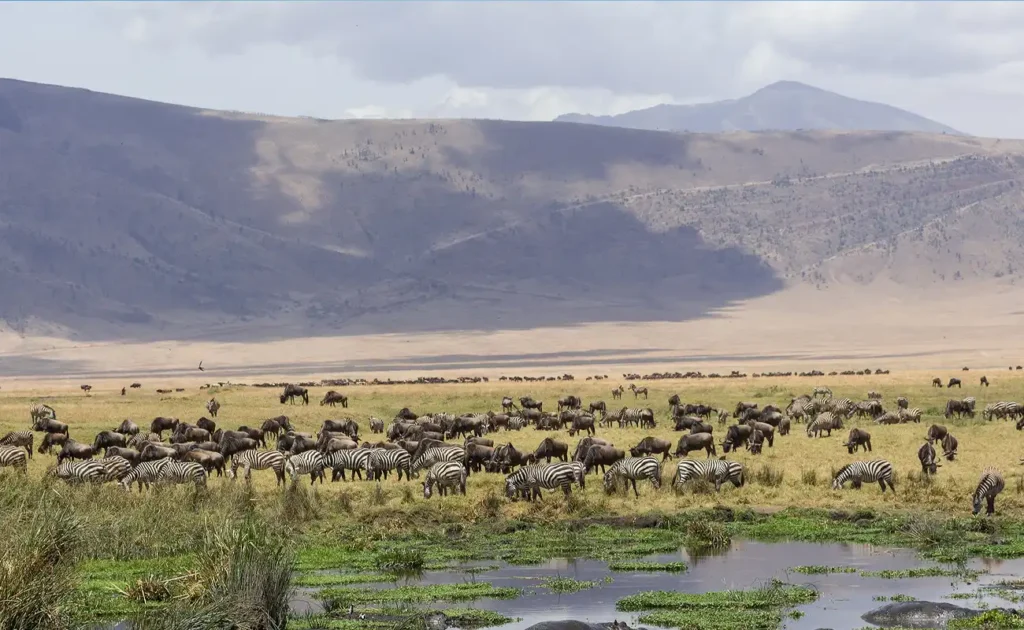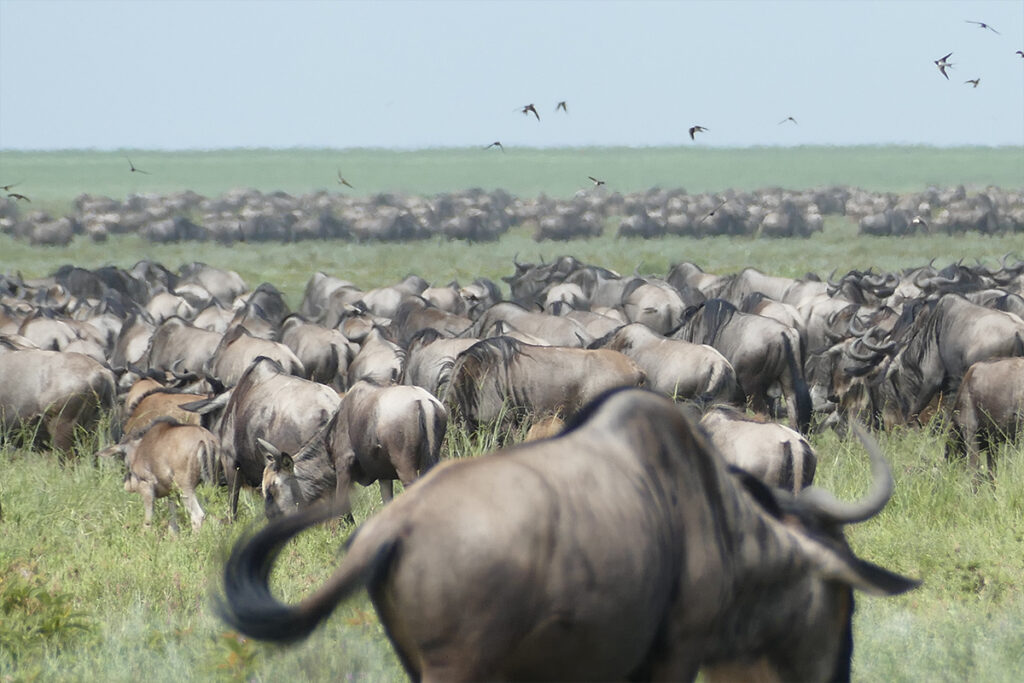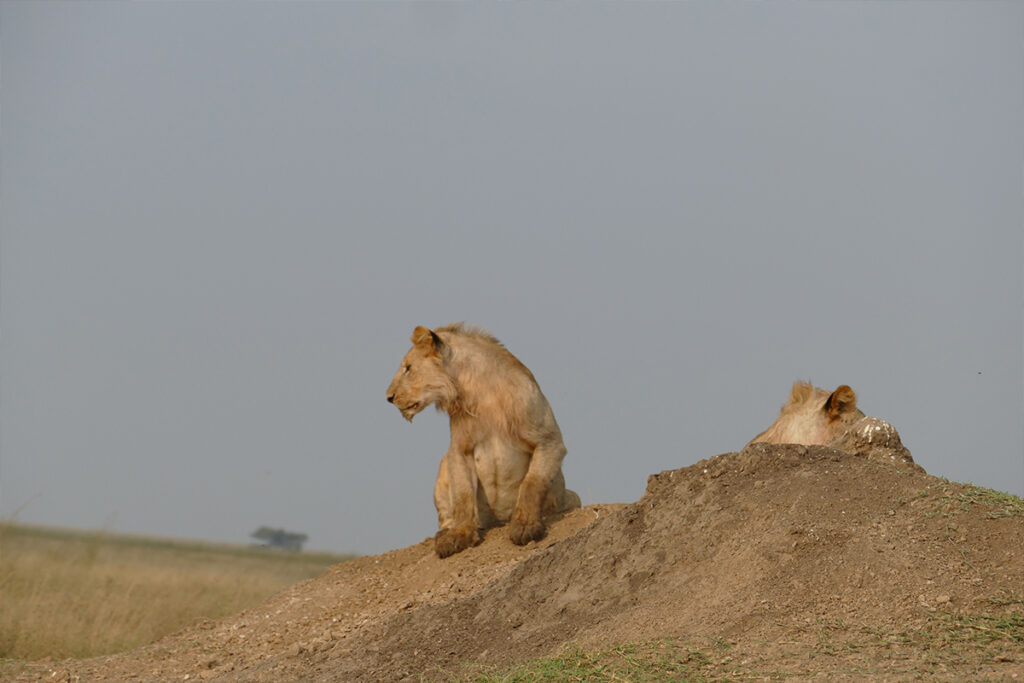On a Tanzania elephant safari, one might encounter the marvel of witnessing herds of gentle giants traversing the iconic savannahs of Serengeti. Among these majestic creatures, it’s fascinating to note that the African elephant, the largest land animal on Earth, can consume up to 300 pounds of food per day. This impressive foraging occasion is truly a spectacle of nature’s abundance.
Tanzania has a rich heritage as a biodiversity hotspot, housing nearly 20% of Africa’s large mammal population within its borders. Historically, the country has been a stronghold for elephant conservation, a noble endeavor as they are a crucial part of the ecosystem. Notably, efforts have reduced poaching incidents significantly by over 50% in recent years, ensuring these magnificent beasts roam freely in their natural habitat once more.
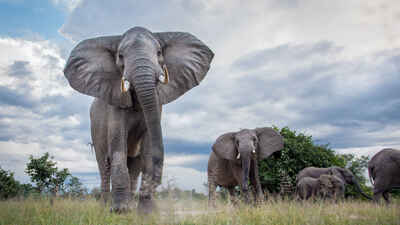
Tanzania Elephant Safari: An Unforgettable Experience
Embarking on a Tanzania elephant safari is like stepping into a world where nature’s grandeur unfolds at every turn. The excitement amplifies when spotting a majestic herd of elephants slowly making their way across the vast savannah. These gentle giants, known for their intelligence and strength, are central to the safari experience. With their impressive tusks and large ears, each elephant tells a story of survival and harmony with the environment. Their presence in the wild not only captivates travelers but also highlights the importance of conservation in this beautiful region.
One of the best places to witness these magnificent creatures is the renowned Tarangire National Park. According to the article, the park offers unique walking safaris, providing visitors with an intimate encounter with the elephants. Imagine the thrill of walking alongside these magnificent beings, observing their behavior up close. Such experiences create lasting memories, enriching one’s appreciation for wildlife. Each safari in Tarangire teaches something new about these incredible animals and their habitats.
Traveling on a Tanzania elephant safari provides more than just wildlife sightings; it immerses visitors in the vibrant culture and history of the region. Local guides share fascinating tales of traditional customs and folklore, connecting tourists to the land in meaningful ways. The safaris also offer a chance to stay in eco-friendly lodges, supporting sustainability efforts. These accommodations prioritize comfort while ensuring minimal impact on the natural surroundings. Experiencing local culture alongside wildlife makes each safari adventure truly unique.
Planning an elephant safari requires some preparation, but the rewards are plenty. Here is the post that details the latest safari trends, helping travelers choose the best timing and routes for their journey. Remember to pack light clothing, sturdy walking shoes, and binoculars to enhance the adventure. Being prepared ensures a smoother experience, allowing more time to marvel at the wildlife. Ultimately, a Tanzania elephant safari promises memorable moments and awe-inspiring landscapes.
The Grandeur of Tanzanian Elephants
The grandeur of Tanzanian elephants truly stands out in the animal kingdom. Known for their impressive size and majestic presence, these elephants can weigh up to 14,000 pounds. Their distinctive large ears help them regulate body temperature, making them uniquely adapted to the African climate. Witnessing their sheer power as they roam the savannah is a remarkable experience. Their social structure and intelligence also add to their allure.
Elephants play a crucial role in maintaining the ecosystem. They help shape the landscape by knocking down trees, which encourages the growth of grasslands. This, in turn, supports a range of other wildlife species. Their dung is also a key fertilizer, enriching the soil with essential nutrients. Observing these behaviors reveals how interconnected life is in the wild.
Their communication skills further highlight their complexity. Elephants use a variety of sounds, from trumpeting to low-frequency rumbles, to communicate over vast distances. They also rely on body language and touch to convey emotions and intentions within their groups. This sophisticated communication plays a vital role in their survival, helping them coordinate movements and maintain strong familial bonds. Understanding these dynamics enhances appreciation for these gentle giants.
Visitors on a Tanzania elephant safari often marvel at the intelligence and emotion displayed by these animals. Watching a herd protect their young or mourn the loss of a member offers a deep sense of connection to them. Such sightings inspire awe and foster respect for wildlife conservation. Witnessing these moments underscores the importance of preserving their habitats for future generations. Experiencing the grandeur of Tanzanian elephants is truly unforgettable.
Spotting Elephants: Best Locations within Tanzania
Tanzania offers several stunning locations to spot elephants in their natural habitat. Tarangire National Park is a prime destination, renowned for its large elephant population and seasonal swamps. During the dry season, the elephants gather around the Tarangire River, creating a spectacular view for visitors. Additionally, the park’s unique baobab trees provide a picturesque backdrop, enhancing the overall experience. The diverse wildlife and varied landscapes make it a must-visit spot.
Another exceptional location is the Serengeti National Park, famous for its incredible wildlife and vast plains. Here, visitors can witness elephants migrating alongside zebras and wildebeest during the Great Migration. This area offers endless opportunities for breathtaking photographs. With skilled guides, tourists can understand the complex ecosystems that elephants inhabit. It’s a place where nature’s wonder unfolds in all its glory.
Ruaha National Park, though less known, offers a more intimate setting for elephant sightings. Its remote location ensures that visitors experience the thrill of wilderness without the crowds. The park is home to more than 10,000 elephants, making encounters with these majestic creatures almost guaranteed. Visitors also enjoy the wide open spaces and dramatic landscapes. This park offers a genuine safari adventure for those seeking tranquility and connection with nature.
Ngorongoro Crater is another remarkable place to see elephants in Tanzania. Known for its breathtaking views, the crater provides a unique setting for wildlife observation. Elephants roam the lush crater floor, surrounded by an array of other animals and vibrant vegetation. The setting feels like a lost paradise, where animals thrive in harmony. Each visit reveals the rich diversity that Tanzania has to offer.
Navigating the Tanzania Safari: Essentials to Know
Embarking on a Tanzania safari is an exciting adventure filled with breathtaking landscapes and incredible wildlife encounters. Before heading out, there are essential preparations to make for a smoother journey. Packing light is crucial, as limited luggage space is available on safari vehicles. Focus on breathable fabrics, comfortable shoes, and a good hat to protect against the sun. Don’t forget binoculars for spotting animals!
Understanding the safari seasons in Tanzania is vital for planning. The dry season, from June to October, offers excellent wildlife viewing as animals gather around limited water sources. Conversely, the wet season, from November to May, brings lush landscapes and fewer crowds. Each season has its unique charm, and the choice depends on personal preferences. Knowing the timings can enhance the overall experience.
Choosing the right safari tour operator is key to a successful trip. Look for operators with knowledgeable guides who can provide insights into the region’s ecosystems and wildlife behavior. Reading reviews and comparing packages helps find the best fit for individual needs. Operators might offer tailored safaris, such as photography or walking-based tours. A well-chosen operator can make the adventure both educational and thrilling.
Health and safety should never be overlooked while on safari. Vaccinations and malaria prophylaxis are recommended before arrival; consult a healthcare professional for advice. It’s important to stay hydrated and use insect repellent to avoid bites. Most importantly, follow the guide’s instructions at all times to ensure a safe experience. Respect for wildlife and their habitats is paramount.
The local culture adds vibrancy and depth to the safari experience. Engaging with community projects or visiting local villages enriches the journey, offering insights into Tanzanian customs and traditions. Learning a few Swahili phrases can help connect with local people, adding a charming aspect to the trip. Every interaction provides a new dimension to the safari experience. Understanding local culture makes the journey memorable.
Conservation Efforts: Protecting the Majestic Elephants of Tanzania
Conservation efforts in Tanzania are crucial for safeguarding the majestic elephants that roam its landscapes. Numerous organizations and government agencies work tirelessly to reduce poaching and preserve natural habitats. The use of anti-poaching patrols and surveillance technology has been instrumental in these efforts. By involving local communities in conservation activities, these programs foster a sense of ownership and responsibility. This multi-faceted approach is helping to secure the future of these incredible animals.
One effective strategy has been the establishment of protected areas and wildlife corridors. These spaces provide safe havens for elephants, allowing them to move freely and access essential resources. Wildlife corridors connect fragmented habitats, ensuring genetic diversity and healthy populations. Such measures also reduce human-elephant conflicts, promoting peaceful coexistence. These initiatives are vital for the long-term survival of Tanzania’s elephant population.
Education and awareness campaigns play a significant role in elephant conservation. Informing the public about the importance of elephants in the ecosystem helps garner support for preservation efforts. Schools, communities, and tourists are targeted for educational programs, highlighting the benefits of conservation. By understanding the critical role elephants play, people are more likely to engage in and support these initiatives. Awareness activities have proven to be a powerful tool in changing attitudes and behaviors.
Collaboration between international organizations and local authorities has amplified conservation efforts. Various partnerships provide funding, expertise, and resources necessary to implement effective strategies. These collaborations have led to successful translocation projects, where elephants are moved to safer areas. Sharing knowledge and best practices ensures that conservation techniques remain innovative and effective. Working together, these alliances create a stronger network for protecting elephants.
Research and monitoring are fundamental aspects of conservation. Scientists and researchers conduct extensive studies to understand elephant behaviors, migration patterns, and population dynamics. This data helps inform management and conservation decisions, tailoring strategies to specific needs. Advanced technologies like GPS tracking and aerial surveys provide invaluable insights. Continuous research allows for adaptive management, ensuring that conservation efforts remain relevant and impactful.
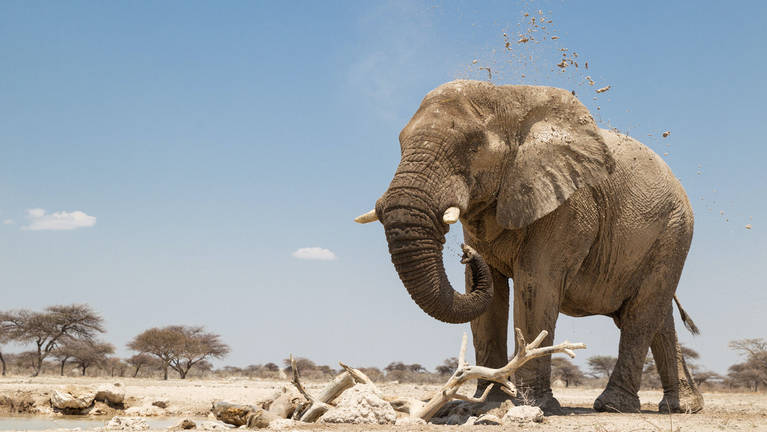
Frequently Asked Questions
Exploring a Tanzania elephant safari raises numerous intriguing questions. Here, we address some common inquiries to enhance your safari knowledge.
1. What is the best time to visit Tanzania for an elephant safari?
The best time to visit Tanzania for an elephant safari generally falls between June and October. This is the dry season when wildlife becomes more visible due to scarce water sources. During this time, elephants and other animals often congregate around rivers and watering holes. This offers tourists excellent wildlife-viewing opportunities.
Additionally, the weather is pleasant, making travel more comfortable. The risk of malaria is lower at this time too. Many safari-goers prefer this period because it coincides with the Great Migration in Serengeti. This natural phenomenon presents a unique opportunity to see diverse wildlife along with elephants, enhancing the safari experience.
2. How does poaching affect elephant populations in Tanzania?
Poaching poses a significant threat to elephant populations across Tanzania. Illegal hunting primarily targets elephants for ivory, leading to a decrease in numbers. Despite conservation efforts, elephants remain vulnerable, affecting their social structures and survival rates. Reduced populations can lead to negative impacts on ecology and tourism.
Efforts are ongoing to combat this issue via stricter laws and better enforcement. Community awareness programs educate locals on the importance of conservation. Many initiatives aim to provide alternative livelihoods for those involved in poaching. These efforts are crucial to secure a future for elephants in Tanzania’s wild landscapes.
3. What role do elephants play in the Tanzanian ecosystem?
In Tanzania, elephants are considered keystone species due to their substantial impact on the ecosystem. They are known to aid in maintaining the savannahs and woodlands. By knocking down trees during feeding, they open up landscapes, allowing other plant species to thrive. This promotes biodiversity and nurtures balanced ecosystems.
Furthermore, elephants contribute to seed dispersal, facilitating plant growth. Their dung acts as a rich fertilizer, enriching the soil. This supports various species, including insects and decomposers, creating complex food webs. Maintaining healthy elephant populations is crucial for preserving Tanzania’s ecological integrity.
4. Are there specific tours focused on elephant conservation?
Indeed, several safari tours in Tanzania focus specifically on elephant conservation. These tours not only provide memorable wildlife experiences but also educate participants on conservation strategies. Visitors engage in activities that promote elephant welfare and learn about ongoing protection efforts. These tours often partner with conservation organizations.
Tour guides cover topics such as habitat restoration and anti-poaching measures. Participants may also visit local communities that play a role in conservation. These experiences aim to inspire a deeper commitment to wildlife protection. Choosing such tours can make a meaningful impact on elephant conservation initiatives.
5. How are local communities involved in elephant conservation?
Local communities play a pivotal role in elephant conservation efforts across Tanzania. Engaging communities in conservation provides them with incentives to protect wildlife. Many initiatives focus on education, highlighting the benefits of maintaining healthy elephant populations. Communities are encouraged to partake in tourism-related opportunities that offer alternative livelihoods.
Collaborative efforts often involve wildlife monitoring and participating in conservation projects. This ensures that community members understand the importance of elephants in their ecosystem. By directly involving them, conservation strategies become more effective and long-lasting. This symbiotic relationship benefits both people and the environment, ensuring sustained elephant protection.

